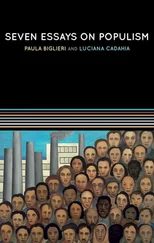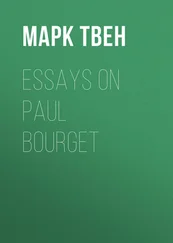Paul Graham - Essays
Здесь есть возможность читать онлайн «Paul Graham - Essays» весь текст электронной книги совершенно бесплатно (целиком полную версию без сокращений). В некоторых случаях можно слушать аудио, скачать через торрент в формате fb2 и присутствует краткое содержание. Жанр: Прочая околокомпьтерная литература, на английском языке. Описание произведения, (предисловие) а так же отзывы посетителей доступны на портале библиотеки ЛибКат.
- Название:Essays
- Автор:
- Жанр:
- Год:неизвестен
- ISBN:нет данных
- Рейтинг книги:4 / 5. Голосов: 1
-
Избранное:Добавить в избранное
- Отзывы:
-
Ваша оценка:
- 80
- 1
- 2
- 3
- 4
- 5
Essays: краткое содержание, описание и аннотация
Предлагаем к чтению аннотацию, описание, краткое содержание или предисловие (зависит от того, что написал сам автор книги «Essays»). Если вы не нашли необходимую информацию о книге — напишите в комментариях, мы постараемся отыскать её.
Essays — читать онлайн бесплатно полную книгу (весь текст) целиком
Ниже представлен текст книги, разбитый по страницам. Система сохранения места последней прочитанной страницы, позволяет с удобством читать онлайн бесплатно книгу «Essays», без необходимости каждый раз заново искать на чём Вы остановились. Поставьте закладку, и сможете в любой момент перейти на страницу, на которой закончили чтение.
Интервал:
Закладка:
Mistakes are natural. Instead of treating them as disasters, make them easy to acknowledge and easy to fix. Leonardo more or less invented the sketch, as a way to make drawing bear a greater weight of exploration. Open-source software has fewer bugs because it admits the possibility of bugs.
It helps to have a medium that makes change easy. When oil paint replaced tempera in the fifteenth century, it helped painters to deal with difficult subjects like the human figure because, unlike tempera, oil can be blended and overpainted.
Attitudes to copying often make a round trip. A novice imitates without knowing it; next he tries consciously to be original; finally, he decides it's more important to be right than original.
Unknowing imitation is almost a recipe for bad design. If you don't know where your ideas are coming from, you're probably imitating an imitator. Raphael so pervaded mid-nineteenth century taste that almost anyone who tried to draw was imitating him, often at several removes. It was this, more than Raphael's own work, that bothered the Pre-Raphaelites.
The ambitious are not content to imitate. The second phase in the growth of taste is a conscious attempt at originality.
I think the greatest masters go on to achieve a kind of selflessness. They just want to get the right answer, and if part of the right answer has already been discovered by someone else, that's no reason not to use it. They're confident enough to take from anyone without feeling that their own vision will be lost in the process.
Some of the very best work has an uncanny quality: Euler's Formula, Bruegel's Hunters in the Snow, the SR-71, Lisp. They're not just beautiful, but strangely beautiful.
I'm not sure why. It may just be my own stupidity. A can-opener must seem uncanny to a dog. Maybe if I were smart enough it would seem the most natural thing in the world that ei*pi = -1. It is after all necessarily true.
Most of the qualities I've mentioned are things that can be cultivated, but I don't think it works to cultivate strangeness. The best you can do is not squash it if it starts to appear. Einstein didn't try to make relativity strange. He tried to make it true, and the truth turned out to be strange.
At an art school where I once studied, the students wanted most of all to develop a personal style. But if you just try to make good things, you'll inevitably do it in a distinctive way, just as each person walks in a distinctive way. Michelangelo was not trying to paint like Michelangelo. He was just trying to paint well; he couldn't help painting like Michelangelo.
The only style worth having is the one you can't help. And this is especially true for strangeness. There is no shortcut to it. The Northwest Passage that the Mannerists, the Romantics, and two generations of American high school students have searched for does not seem to exist. The only way to get there is to go through good and come out the other side.
The inhabitants of fifteenth century Florence included Brunelleschi, Ghiberti, Donatello, Masaccio, Filippo Lippi, Fra Angelico, Verrocchio, Botticelli, Leonardo, and Michelangelo. Milan at the time was as big as Florence. How many fifteenth century Milanese artists can you name?
Something was happening in Florence in the fifteenth century. And it can't have been heredity, because it isn't happening now. You have to assume that whatever inborn ability Leonardo and Michelangelo had, there were people born in Milan with just as much. What happened to the Milanese Leonardo?
There are roughly a thousand times as many people alive in the US right now as lived in Florence during the fifteenth century. A thousand Leonardos and a thousand Michelangelos walk among us. If DNA ruled, we should be greeted daily by artistic marvels. We aren't, and the reason is that to make Leonardo you need more than his innate ability. You also need Florence in 1450.
Nothing is more powerful than a community of talented people working on related problems. Genes count for little by comparison: being a genetic Leonardo was not enough to compensate for having been born near Milan instead of Florence. Today we move around more, but great work still comes disproportionately from a few hotspots: the Bauhaus, the Manhattan Project, the New Yorker, Lockheed's Skunk Works, Xerox Parc.
At any given time there are a few hot topics and a few groups doing great work on them, and it's nearly impossible to do good work yourself if you're too far removed from one of these centers. You can push or pull these trends to some extent, but you can't break away from them. (Maybe you can, but the Milanese Leonardo couldn't.)
At every period of history, people have believed things that were just ridiculous, and believed them so strongly that you risked ostracism or even violence by saying otherwise.
If our own time were any different, that would be remarkable. As far as I can tell it isn't.
This problem afflicts not just every era, but in some degree every field. Much Renaissance art was in its time considered shockingly secular: according to Vasari, Botticelli repented and gave up painting, and Fra Bartolommeo and Lorenzo di Credi actually burned some of their work. Einstein's theory of relativity offended many contemporary physicists, and was not fully accepted for decades-- in France, not until the 1950s.
Today's experimental error is tomorrow's new theory. If you want to discover great new things, then instead of turning a blind eye to the places where conventional wisdom and truth don't quite meet, you should pay particular attention to them.
As a practical matter, I think it's easier to see ugliness than to imagine beauty. Most of the people who've made beautiful things seem to have done it by fixing something that they thought ugly. Great work usually seems to happen because someone sees something and thinks, I could do better than that. Giotto saw traditional Byzantine madonnas painted according to a formula that had satisfied everyone for centuries, and to him they looked wooden and unnatural. Copernicus was so troubled by a hack that all his contemporaries could tolerate that he felt there must be a better solution.
Intolerance for ugliness is not in itself enough. You have to understand a field well before you develop a good nose for what needs fixing. You have to do your homework. But as you become expert in a field, you'll start to hear little voices saying, What a hack! There must be a better way. Don't ignore those voices. Cultivate them. The recipe for great work is: very exacting taste, plus the ability to gratify it.
Sullivan actually said "form ever follows function," but I think the usual misquotation is closer to what modernist architects meant.
Stephen G. Brush, "Why was Relativity Accepted?" Phys. Perspect. 1 (1999) 184-214.
What Languages Fix
Kevin Kelleher suggested an interesting way to compare programming languages: to describe each in terms of the problem it fixes. The surprising thing is how many, and how well, languages can be described this way.
Algol:Assembly language is too low-level.
Pascal:Algol doesn't have enough data types.
Modula:Pascal is too wimpy for systems programming.
Simula:Algol isn't good enough at simulations.
Smalltalk:Not everything in Simula is an object.
Fortran:Assembly language is too low-level.
Читать дальшеИнтервал:
Закладка:
Похожие книги на «Essays»
Представляем Вашему вниманию похожие книги на «Essays» списком для выбора. Мы отобрали схожую по названию и смыслу литературу в надежде предоставить читателям больше вариантов отыскать новые, интересные, ещё непрочитанные произведения.
Обсуждение, отзывы о книге «Essays» и просто собственные мнения читателей. Оставьте ваши комментарии, напишите, что Вы думаете о произведении, его смысле или главных героях. Укажите что конкретно понравилось, а что нет, и почему Вы так считаете.











